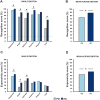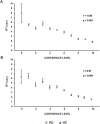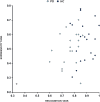Facial Emotion Recognition and Expression in Parkinson's Disease: An Emotional Mirror Mechanism?
- PMID: 28068393
- PMCID: PMC5221788
- DOI: 10.1371/journal.pone.0169110
Facial Emotion Recognition and Expression in Parkinson's Disease: An Emotional Mirror Mechanism?
Abstract
Background and aim: Parkinson's disease (PD) patients have impairment of facial expressivity (hypomimia) and difficulties in interpreting the emotional facial expressions produced by others, especially for aversive emotions. We aimed to evaluate the ability to produce facial emotional expressions and to recognize facial emotional expressions produced by others in a group of PD patients and a group of healthy participants in order to explore the relationship between these two abilities and any differences between the two groups of participants.
Methods: Twenty non-demented, non-depressed PD patients and twenty healthy participants (HC) matched for demographic characteristics were studied. The ability of recognizing emotional facial expressions was assessed with the Ekman 60-faces test (Emotion recognition task). Participants were video-recorded while posing facial expressions of 6 primary emotions (happiness, sadness, surprise, disgust, fear and anger). The most expressive pictures for each emotion were derived from the videos. Ten healthy raters were asked to look at the pictures displayed on a computer-screen in pseudo-random fashion and to identify the emotional label in a six-forced-choice response format (Emotion expressivity task). Reaction time (RT) and accuracy of responses were recorded. At the end of each trial the participant was asked to rate his/her confidence in his/her perceived accuracy of response.
Results: For emotion recognition, PD reported lower score than HC for Ekman total score (p<0.001), and for single emotions sub-scores happiness, fear, anger, sadness (p<0.01) and surprise (p = 0.02). In the facial emotion expressivity task, PD and HC significantly differed in the total score (p = 0.05) and in the sub-scores for happiness, sadness, anger (all p<0.001). RT and the level of confidence showed significant differences between PD and HC for the same emotions. There was a significant positive correlation between the emotion facial recognition and expressivity in both groups; the correlation was even stronger when ranking emotions from the best recognized to the worst (R = 0.75, p = 0.004).
Conclusions: PD patients showed difficulties in recognizing emotional facial expressions produced by others and in posing facial emotional expressions compared to healthy subjects. The linear correlation between recognition and expression in both experimental groups suggests that the two mechanisms share a common system, which could be deteriorated in patients with PD. These results open new clinical and rehabilitation perspectives.
Conflict of interest statement
The authors have declared that no competing interests exist.
Figures






References
-
- Phan KL, Wager T, Taylor SF, Liberzon I. Functional neuroanatomy of emotion: a meta-analysis of emotion activation studies in PET and fMRI. Neuroimage. 2002. June;16(2):331–48. - PubMed
-
- Buck R, Duffy RJ. Nonverbal communication of affect in brain-damaged patients. Cortex. 1980. October;16(3):351–62. - PubMed
MeSH terms
LinkOut - more resources
Full Text Sources
Other Literature Sources
Medical

